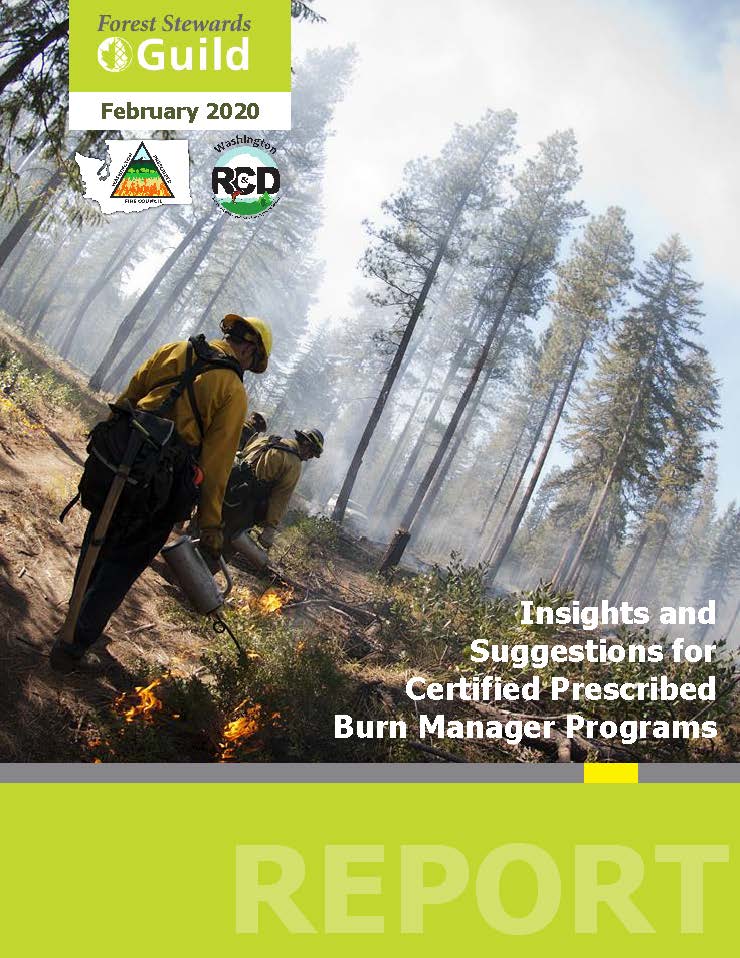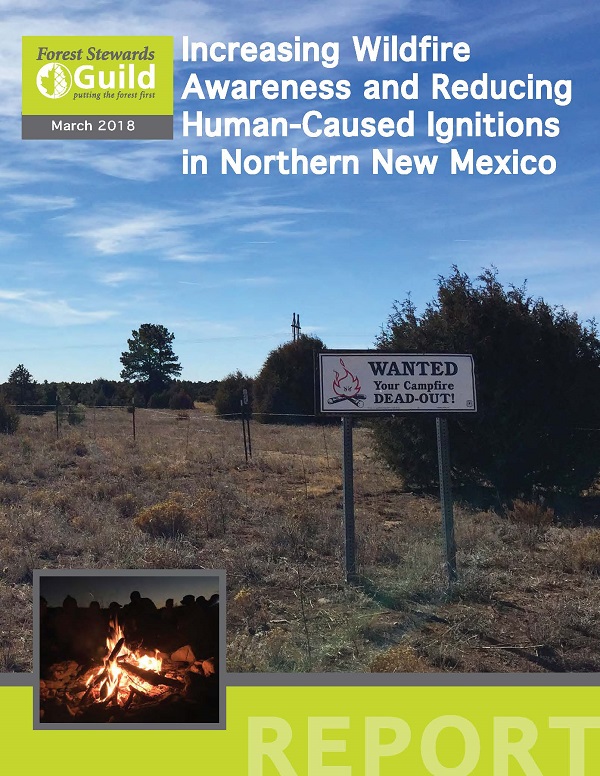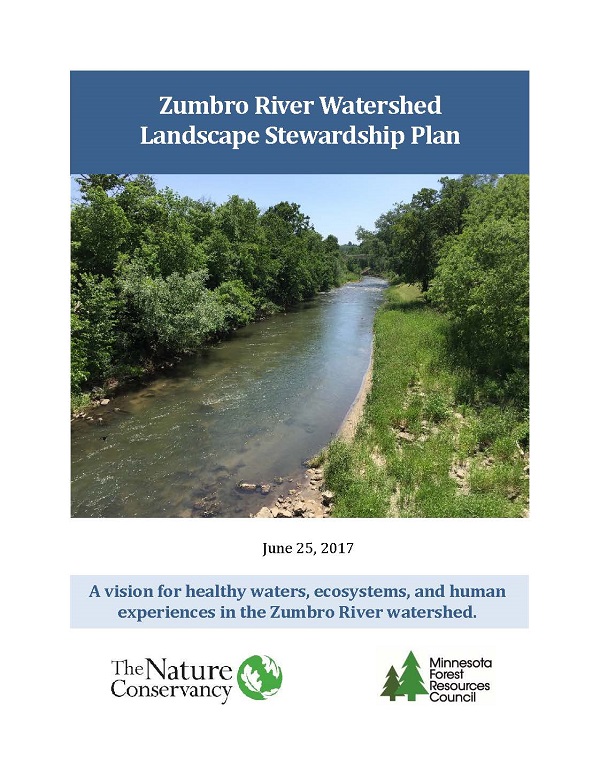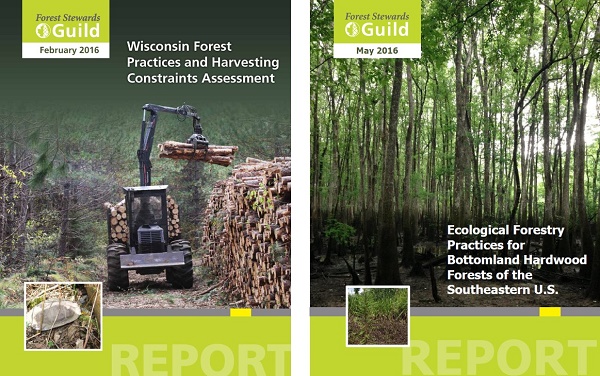Research
The Forest Stewards Guild research program carries out the Guild's mission by synthesizing and conducting scientific research to support our science based advocacy, field meetings, Model Forests, and members' land stewardship. Science goes hand in hand with Guild member's place-based experience to guide the practice of ecologically, economically, and socially responsible forestry. Guild research plays a key role as a moderating voice in forest debates because we strive to balance the ecological and economic concerns that are often in conflict. We develop informational resources that help people and communities who are engaged in forest stewardship. We also assist research scientists and organizations in incorporating the place-based experiential knowledge, perspectives, and needs of foresters and other natural resource professionals.
Current Research at the Guild
Climate Change, Carbon, and Forests
The Guild research seeks to identify how forests and forestry can resist the impacts of climate change, mitigate its effects, and adapt to changing conditions. Our 2020 synthesis report, Moving the Needle: A Review of Needs to Increase Climate Adaptation in the Forests of New England, provides an update on how forest managers are adapting forests to the changing climate today, as well as steps for overcoming barriers to forest climate adaptation.
Forest Biomass
The Guild has worked for more than a decade to establish science-based guidelines for use of forest biomass for energy. Our expertise is in the forest, so our work has focused on understanding how the forest should look after a harvest. A series of science-synthesis reports documented the importance of dead wood in Northeast, Southeast, Pacific Northwest, and Californian forests. Based on the need for snags, large downed logs, fine woody material, and other forest elements, and a review of existing guidelines, we developed biomass harvesting guidelines:
Wildfire and Communities
In fire-adapted forests, understanding wildfire and its impacts on ecosystems and communities is one of the central forest management challenges of our generation. The Guild’s research has touched a range of the issues as follows:
- Our report on fuel treatments in Southwestern mixed conifer forests has helped managers plan treatments and return fire to this forest type.
- Our work on treatment effectiveness in the wildland urban interface helped raise the bar for community wildfire protection plans.
- In collaboration with the US Forest Service and Santa Clara Pueblo, we examined the ecological effects of slash pile burning.
- More recently, our work has focused on reducing unplanned human caused wildfires and encouraging prescribed fire on private lands.
- We are working with partners including The Nature Conservancy on post-fire impacts, response, and ecological trajectories
Prescribed Fire and Management of Wildfires
Prescribed fire is a crucial tool for restoring forests and protecting from negative fire effects. The Guild is engaged in research to understand how to facilitate more prescribed fire, particularly for private landowners. For more information, see the report Prescribed Fire on Private Land in New Mexico. We are also working with a research team from the US Forest Service and Northern Arizona University to understand how managers can use naturally ignited wildfires to benefit forests and communities.
Ecological Forestry
The Guild is committed to supporting ecological forestry, which requires a firm scientific foundation. Often this means synthesizing existing research and presenting it in a format useful to managers and landowners. For example, we are working with partners to encourage conservation and holistic management in wetland forests as described in the report Ecological Forestry Practices for Bottomland Hardwood Forests. In some cases, economic factors determine whether or not forests are managed in an ecologically responsible manner. In Wisconsin, we studied how forest practices and range of constraints on harvesting is affecting forests and forestry and published a report.
Research and management publications
2023
Old-Growth and Mature Forests in Relation to the Collaborative Forest Landscape Restoration Program, October 2023
2022 Wildfire Season: An Overview, Southwestern United States, August 2023
2-3-2 Cohesive Strategy Partnership Multiparty Monitoring Plan, Edition 1, spring 2023
Managed Wildfire: a research synthesis and overview, April 2023.
Forestry for the Birds: Western Oregon Guide, February 2023.
2022
Logger Engagement and Retention: Surveying what matters in a quality logging operation across the U.S., July 2022.
2021 Wildfire Season: An Overview, July 2022
Oak Resiliency Assessment Tool in PDF, 2022
Wetlands Restoration and Conservation Incentive Programs in the State of Georgia, Jan 2022.
2021
Economic Impacts from the USDA Forest Service's Collaborative Forest Restoration Program 2001-2016, Aug 2021.
2020 Wildfire Season: An Overview Southwestern US, July 2021
Investing in Wildfire Prevention. May 2021.
2020
Expanding the use of prescribed fire in New Mexico, final report. June 2020.
For Landowners: 10 Recommendations to Help You Manage Ash in Your Woods. Dec 2020.
For Foresters: Ten Recommendations for Managing Ash, July 2020.
2019 Wildfire Season: An Overview Southwestern US, June 2020
Monitoring Update: Restoration Objectives in the Zuni Mountains CFLR Landscape, March 2020.
Insights and Suggestions for Certified Prescribed Burn Manager Programs, February 2020
Moving the Needle: A Review of Needs to Increase Climate Adaptation in the Forests of New England, January 2020
2019
Assessment of Forest and Woodland Treatment Effects on Wildlife, 2019
Prescribed Fire on Private Land in New Mexico, December 2019
2018 Wildfire Season: An Overview Southwestern US, June 2019
Research on the ecological effects of slash pile burning, 2019.
Snake River Landscape Stewardship Plan
2018
2017 Wildfire Season: An Overview Southwestern US, May 2018
Increasing wildfire awareness and reducing human-caused ignitions in Northern New Mexico, March 2018 (summary)
Great Santa Fe Fireshed Factsheet: Demystifying NEPA, March 2017
Great Santa Fe Fireshed Factsheet: Tree Rings and Fire History, February 2017
2017
Putting Good Fire on the Ground: Rio Trampas TREX, October 2017
Cannon River Watershed Landscape Stewardship Plan Summary, July 2017
Zumbro River Watershed Landscape Stewardship Plan Summary, July 2017
2016 Wildfire Season: An Overview Southwestern US, May 2017
Controlled Burning on Private Land in New Mexico, May 2017
Home Hazard Assessment Guide, March 2017
Home Hazard Assessment Worksheet, July 2017 (to be used with the guide)
Rhode Island Woodland Partnership Strategic Plan, January 2017
2016
Fire as an Ecosystem Process: The Black Lake Burn, December 2016
2015 Wildfire Season: An Overview, Southwestern U.S., May 2016
Ecological Forestry Practices for Bottomland Hardwood Forests of the Southeastern U.S., May 2016 (download a printer-friendly version here)
Economic and Ecological Effects of Forest Practices and Harvesting Constraints on Wisconsin’s Forest Resources and Economy, February 2016
2015
Evaluating the Effectiveness of Wildfire Mitigation Activities in the Wildland-Urban Interface, November, 2015 (read a summary here)
Burning Across Fence Lines, 2015
2014 Wildfire Season: An Overview, Southwestern U.S., August, 2015
2014
The State of Forests and Forestry in the Androscoggin Valley-Mahoosuc region, September 2014
A Buyer’s Guide to Sourcing Wood Heating Fuel in the Northeastern U. S., May, 2014
2013 Wildfire Season: An Overview, Southwestern U.S., February, 2014
Restoration and Resilience in New Jersey's Forests, February, 2014
2013
Forests to Faucets: Protecting upstream forests for clean water downstream, July 2013
Forest Biomass Retention and Harvesting Guidelines for the Pacific Northwest, April, 2013
2012
Forest Biomass Retention and Harvesting Guidelines for the Southeast, February, 2012
Biomass Supply and Carbon Accounting for Southeastern Forests, February, 2012
2011
Ecology of Dead Wood in the Southeast, February 2011
Carbon Accounting and Management of Lying Dead Wood, January 2011
2010
Black Lake Forest Restoration and Workforce Sustainability Project, Grant # CFRP 09-08, Multiparty Monitoring Report, November, 2010
Forest Biomass Retention and Harvesting Guidelines for the Northeast, June, 2010
Ecology of Dead Wood in the Northeast, June, 2010
Revised Assessment of Biomass Harvesting and Retention Guidelines, June, 2010
2009
Valle Grande II Collaborative Restoration Project Socioeconomic Monitoring Report, January 2009 (link coming soon)
An Assessment of Biomass Harvesting Guidelines, January 2009
2008
Monitoring the long term ecological impacts of New Mexico's Collaborative Forest Restoration Program, December 2008
Climate Change and Mixed Conifer / Aspen Systems in New Mexico: Considerations for Managers, December 2008
Managing Forests in the Face of Climate Change: A summary of the New Mexico Forestry and Climate Change Workshop, December 2008
A Market-Based Approach to Community Wood Energy: An Opportunity for Consulting Foresters, November 2008
Synthesis of Knowledge from Biomass Removal Case Studies, September 2008
Community Guide to Preparing and Implementing a Community Wildfire Protection Plan, August 2008
Engaging Socially Vulnerable Populations in Community Wildfire Protection Plans, August 2008
Harnessing the Power of Local Wood Energy, August 2008
Short Guide for Developing CFRP Restoration Prescriptions, January 2008
Social and Economic Issues in Landscape Scale Restoration, January 2008
2007
Community Owned Forests: An Example from the Southwest, December 2007
Climate Change, Carbon, and the Forests of the Northeast, December 2007
Navigating the Motives and Mandates of Multiparty Monitoring, September 2007
Maltreatment and Injustice: An Overview of the Plight of Latino Forest Workers in the Southeast, August 2007
Measuring Community Capacity for Protection from Wildfire, February 2007
An Evaluation of Fuel Reduction Projects and the Healthy Forests Initiative, January 2007
Workbook for Community Monitoring of Federal Fuel Reduction Projects, January 2007
2006
Ensuring Sustainable Forests through Working Forest Conservation Easements, June 2006
2004
Fuel Reduction Projects in Southwest Ponderosa Pine Forests: A Description of Sites and Treatments, June 2004
State of the National Fire Plan, April 2004
Traditional Ecological Knowledge: Informing Bosque Restoration at Tesuque Pueblo, 2004
2003
An Evaluation of Fuel Reduction Projects in the Eastern Cibola National Forest, November 2003
Understanding Condition Class: An Evaluation of its Application at the National Forest Level,June 2003
Condition Class of America's Lands: Appropriate Applications at the National Scale, June 2003
Modifying Wildfire Behavior: The Effectiveness of Fuel Treatments, April 2003
2002
Distribution of Timber Sales on Dixie and Fishlake National Forests, 1985–2001, December 2002
2001
Annotated Bibliography: Fuel Treatments and Fire Behavior, November 2001







